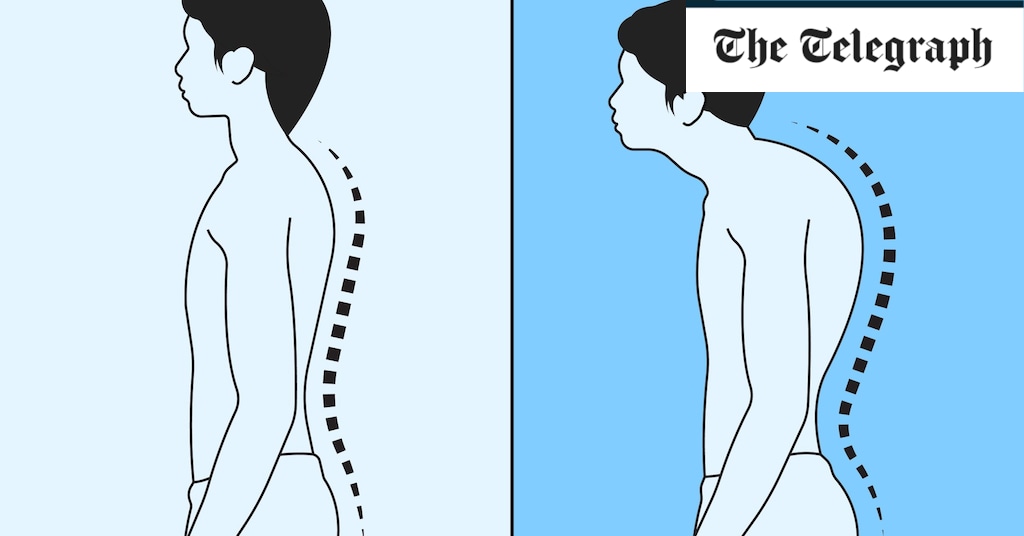You might not be aware of the medical term kyphosis, but chances are you will have heard of a ‘dowager’s hump’, or its modern day equivalent: tech neck. Used to describe any sort of rounding of the upper back, this outdated name stemmed from the fact that a pronounced hump in the spine at the base of the neck was often noted in women of a certain age and stature. However, gender and age are in no way uniquely responsible for this condition: poor posture is a major contributing factor.
The United Chiropractic Association, which has over 600 members across the UK, says that poor posture is as big a health risk as obesity. They urge people to have their posture checked by a registered chiropractor and to take steps to safeguard their posture and health.
Here, two experts explain how our tech-laden lifestyle choices are putting us all at increased risk of developing spinal issues and how we can stop our slide into slouch.
What exactly is dowager’s hump, also known as kyphosis?
“Dowager’s hump, neck hump, and hunchback all refer to the visible alteration of the spine at the base of the neck,” says Michael Fatica, a consultant osteopath. “It is the poor alignment of the cervical spine – our neck – and its connection to the thoracic spine where our rib cage starts. The hump is most visible on the surface, at the level of the junction between the neck and the upper back, where a necklace might rest, for example.”
Tim Allardyce, an osteopath and physiotherapist, Allardyce says, “some degree of spinal curvature is perfectly normal. What we are concerned about, as professionals, and what’s happening when you have a pronounced hump in that part of your spine, is too much ‘hyper kyphotic’ curvature. The most accurate way of describing a dowager’s hump is ‘hyper kyphosis of the upper thoracic spine’.”
Why don’t people call it dowager’s hump anymore?
The term dowager’s hump is falling out of use, as it has negative and misogynistic connotations. It harks back to a time when a titled widow, mourning her husband, would be bent over in grief and might be admonished and told to stand up straight.
Skip to:
Hyper kyphosis can be congenital, developmental, nutritional or post-traumatic. But, Fatica says, “these types of kyphosis will, as a general rule, normally affect the mid thoracic spine and are less likely to cause the pronounced hump at the base of the neck.”
Hyper kyphosis of the upper thoracic spine, resulting in the tell-tale dowager’s hump, can be caused either by disease or lifestyle. “Osteoporosis is one cause,” explains Allardyce. “When your bones aren’t as strong, the vertebrae can actually compress and sink into themselves. This typically occurs at the front of each vertebrate, creating a wedge shape. This causes a pronounced forward flexion of the spine, creating the classic humped effect.”
